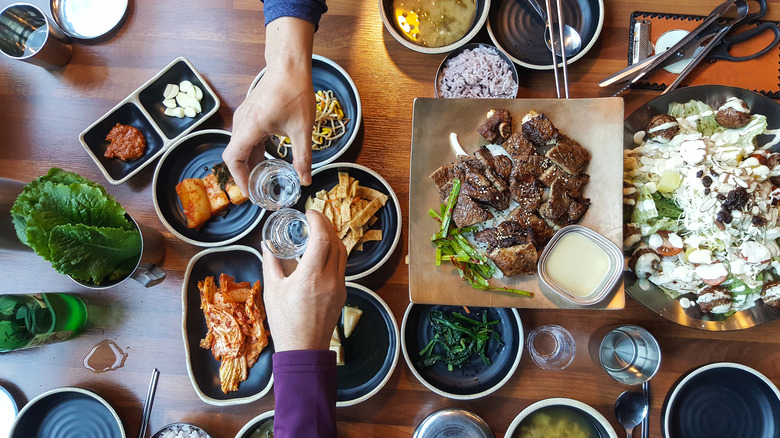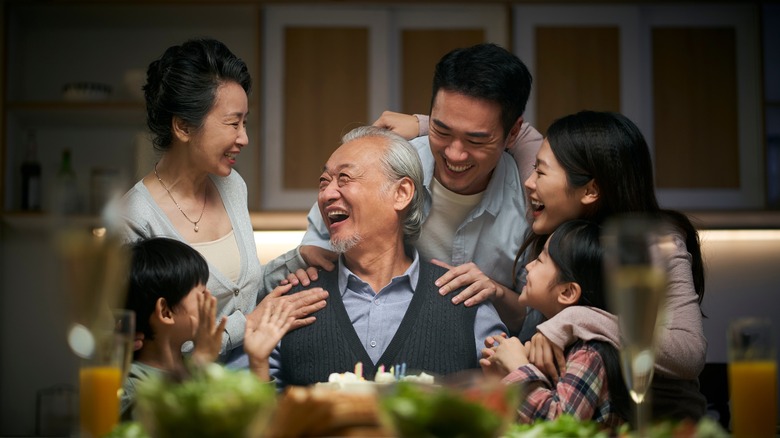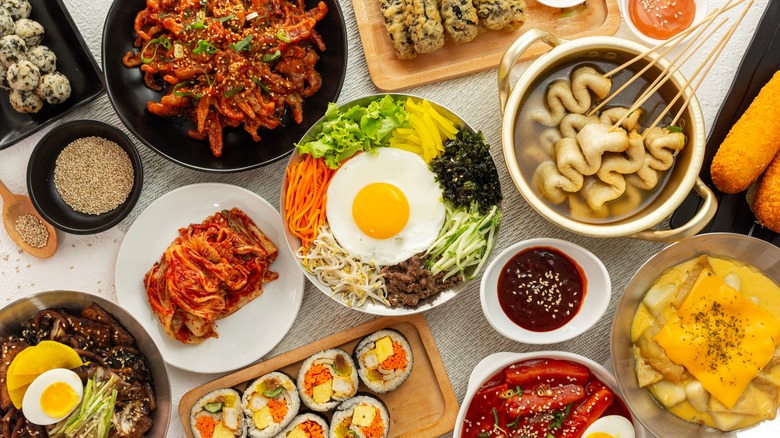The Crucial Etiquette Rule To Know While Dining In South Korea
No matter where in the world you are, table manners and dining etiquette are important ways to show that you understand and respect local customs in an intimate setting. In South Korea, many dining customs revolve around sharing food and respecting the hierarchy of the present company. Communal meals served from centrally placed dishes are common, making correct use of chopsticks imperative for serving yourself. (And knowing when not to use them is also crucial — soups and rice, for example, are for spoons only.) However, you should never take too much, be too noisy, or serve yourself first.
While Americans may be accustomed to waiting until everyone has sat down (if at home) or been served (if at a restaurant) before eating, this is generally because eating from individual plates is the norm in the U.S. In contrast, South Korean etiquette is shaped by the communal dining experience. Because of this structure, South Korea has one dining etiquette rule that might be novel to visitors: No one is allowed to eat until the oldest person at the dinner table has taken their first bite.
Why does the oldest eat first?
Respecting your elders is a fundamental tenet of South Korean society, dating back to the Confucian influence on the nation, which had a highly patriarchal bent. Elders (particularly male elders) are treated with the utmost respect in South Korea, and can only be addressed by special honorifics, even by close family members.
It is because of this cultural respect that the oldest family member traditionally eats first at a South Korean meal — whether at home or in a restaurant. Elder family members will also be seated before all other family members and will be seated closer to the interior of the home or restaurant, with younger family members seated close to the exit. The entire structure of the meal is organized around age, which dictates a family member or guest's rank within the family unit. Even once you have begun eating, it is important to match your eating speed to the eldest family member, waiting to finish your meal until they have — no matter how delicious the hot stone bibimbap is.
Other Korean dining etiquette tips
There are a few other dining etiquette tips you should keep in mind when dining in South Korea. Keeping quiet is a sign of respect that shows you are more invested in eating the delish food than gabbing with your neighbors. Similarly, avoid banging your chopsticks or other eating utensils while eating, and follow the lead of those around you. You might even want to make sure you aren't chewing too loudly.
In terms of tableware, keep your bowls on the table, and don't lift them to try and swallow that last sip of broth or fish out that evasive last noodle. Do not stick your spoon or chopsticks in your bowl of rice when you have finished eating. Instead, return them to where they were at your place setting (chopsticks typically have a holder to rest them on). The act of leaving these in a rice bowl is only done during ancestral rites and is considered disrespectful. When passing dishes, be sure to use both hands. If someone's glass is empty, it is considered polite to fill it for them, but if your glass is empty, allow someone else to do the honors ... and don't say no if they offer to refresh your drink! But most importantly, be sure to let your hosts know how delicious their meal was.



